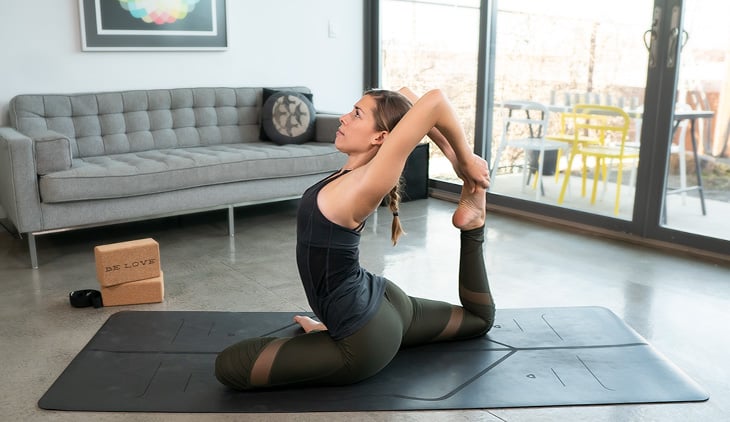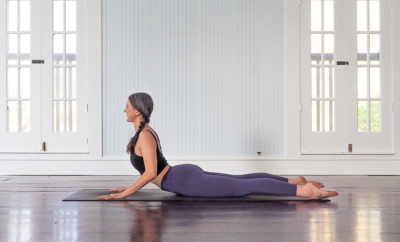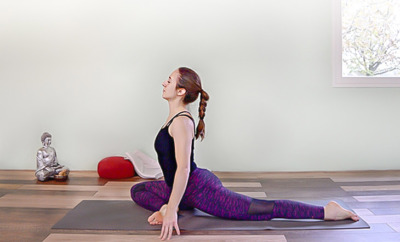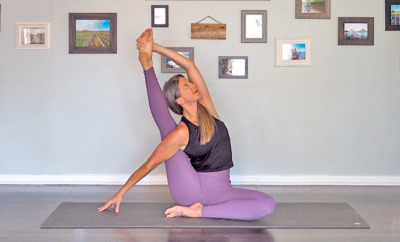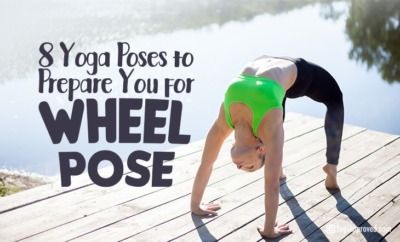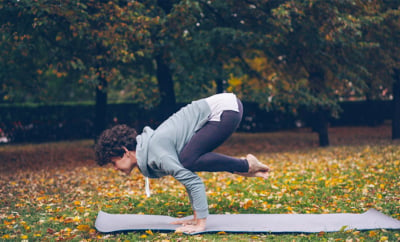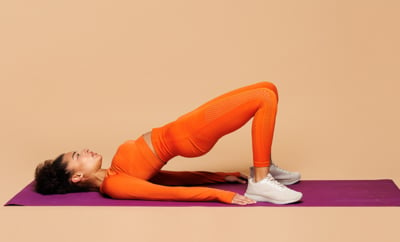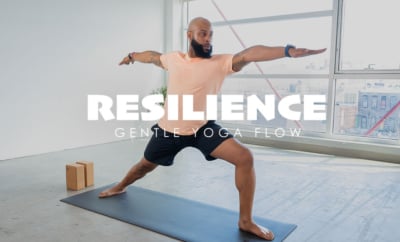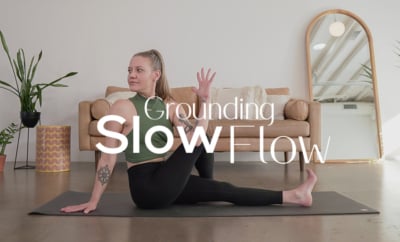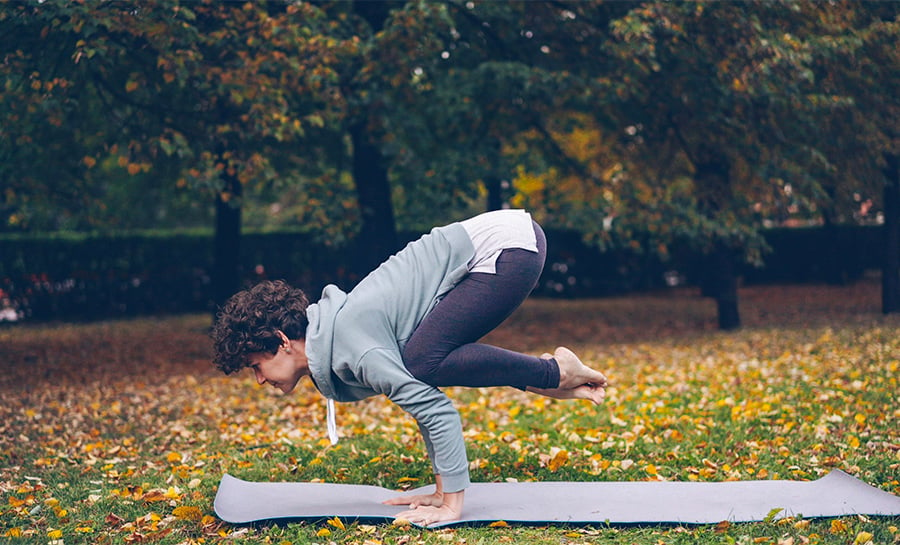Your Intelligent 7-Step Guide to Access Wheel Pose (Urdhva Dhanurasana) Safely
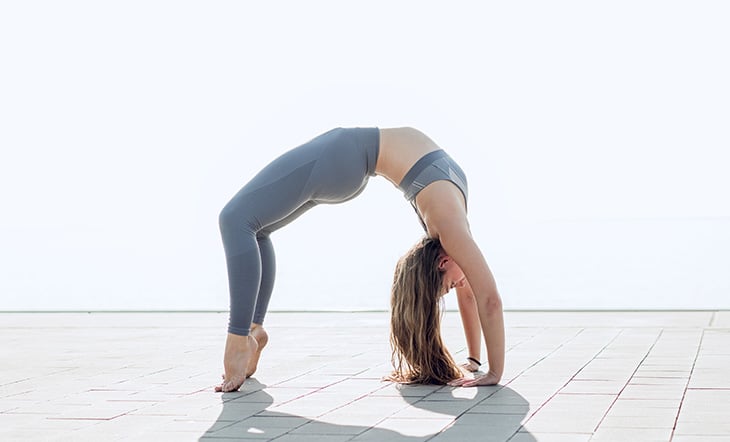
wheel pose featured
Backbends are among the more elusive set of postures in the yoga asana practice because of their demand on the spine.
For most backbends, we need to move the spine in all different directions, engage the back side of the body and open the front of the body.
In this yoga tutorial, we will use twists to gain access to one of the biggest backbends in the yoga game: Wheel Pose, or Urdhva Dhanurasana (Upward Facing Bow)!
Like any sustainable yoga practice, preparation is essential.
Wheel Pose is such a challenging pose for most modern day yogis because we often live our lives in spinal flexion rather than spinal extension.
While some yoga bodies are prone to being naturally back-bending, most bodies require a considerate amount of preparation in order to achieve such expansive, extraordinary shapes. Like any sustainable yoga practice, preparation is essential.
This is why we use twists to properly warm up the spine.
In addition to preparation of the spinal column, we need to build strength in the backside of the body and open up the front side of the body. And as an inverted backbend, you will also experience the liberation that comes with it.
Enjoy this Free Yoga Flow with Backbends Class
This beginner backbend yoga class is an excellent starting point for anyone new to backbends. This practice is also great for anyone looking for a refresher on proper form and technique to access backbends safely.
Practice These 7 Poses to Access Wheel Pose (Urdhva Dhanurasana) Safely:
The next seven yoga poses are meant to be practiced in a sequential format to access the peak pose, Wheel.
You are welcome to repeat steps as often as you wish. To begin, please make sure you have a yoga mat, two blocks and a positive attitude. You got this!
Make sure you warm-up your body with a few Sun Salutations. For a more accessible flow, I recommend practicing Moon Salutations, or Chandra Namaskar. These are similar to Sun Salutations but include lunges.
For more of an advanced practice, include High Lunge to engage the quadricep muscles. For more of a modified practice, try Low Lunge. Anything goes, as long as it feels safe in your body.
Looking for a beginner backbend practice? Take my Backbends for Beginners 20-Minute Flow (Free Yoga Class)
1. High Lunge with Chest Expansion
Sanskrit: Alanasana

Modification: Lower the back knee down
How to practice:
- From Down Dog, step right foot between your hands and lift your torso into High Lunge
- Bring your backside online and engage your glutes
- Draw your ribs in and lift your hip points up
- Lift through the sternum to broaden the chest as you reach your arms overhead
- When you find your stability, reach your arms behind your back and interlace your fingers, pulling them down towards your back foot
2. Simple Lunge Twist
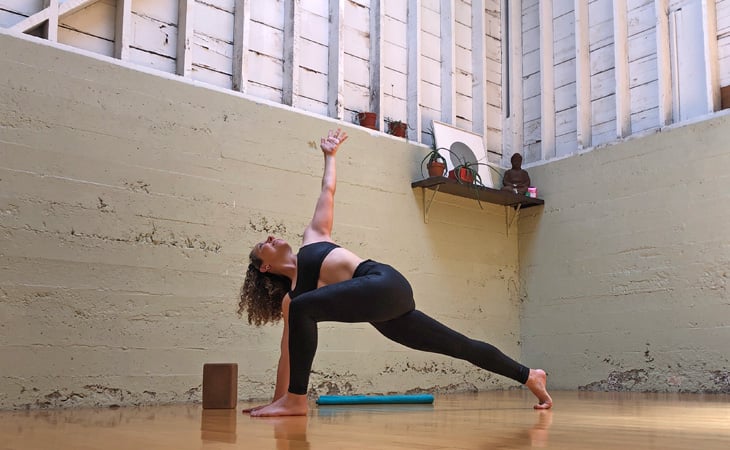
How to practice:
- From your High Lunge above, plant your left palm as you extend your right arm skyward
- Use your inhale to extend the spine. As you exhale, rotate the torso to a sustainable edge and send your gaze up (if that feels safe on your neck)
- Lift your hips and engage your glutes to build strength and maintain balance
- Root down through your feet to create additional stability
Tutorial: 9 Spinal Twists for Beginner to Advanced Yogis
3. Low Lunge with Side Bend
Sanskrit: Anjaneyasana
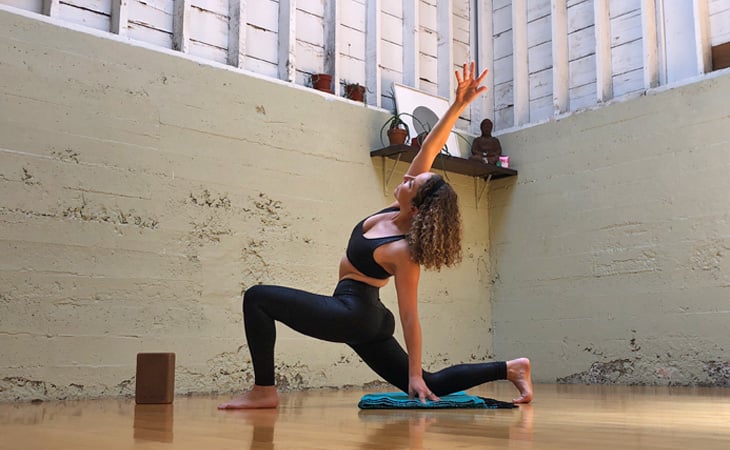
Enhancement: Hold the top wrist with bottom arm
How to practice:
- From the High Lunge position above, lower your back knee down and stack your front knee over your front ankle
- Clasp left wrist with right hand and reach up and over your front right thigh, keeping shoulders stacked above hips
- Squeeze your inner thighs to control the descent of the pelvis and find stability
- Extend the top arm from the armpit to the elbow and all the way through your fingertips
Looking for more yoga tutorials and yoga tips? Check out our full library of Yoga articles here
4. Revolved Crescent Lunge Twist
Sanskrit: Parivrtta Anjaneyasana
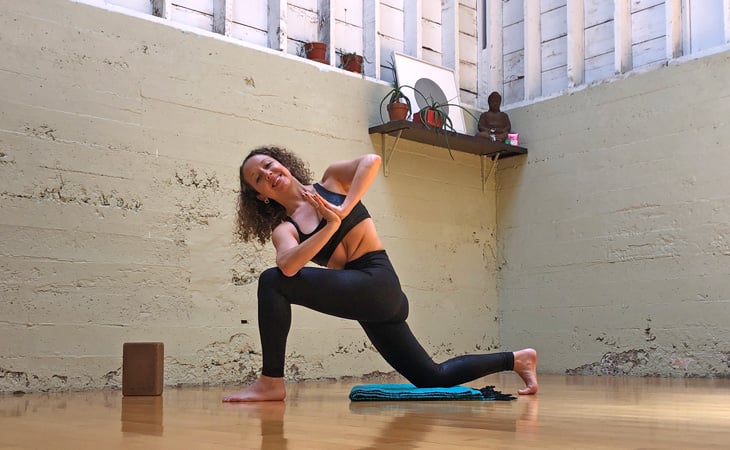
Enhancement: Lift the back knee and extend the back leg
How to practice:
- From your Low Lunge above, bring your hands to heart center
- Bring your bottom elbow to press against the outside of your front knee
- As you inhale, extend the spine. As you exhale, rotate the torso to a sustainable edge
- Lift your hips away from the earth to build strength and maintain balance
- Root down through your feet to create additional stability
5. Runner’s Lunge with Quad Stretch
Sanskrit: Parivrtta Utthan Pristhasana
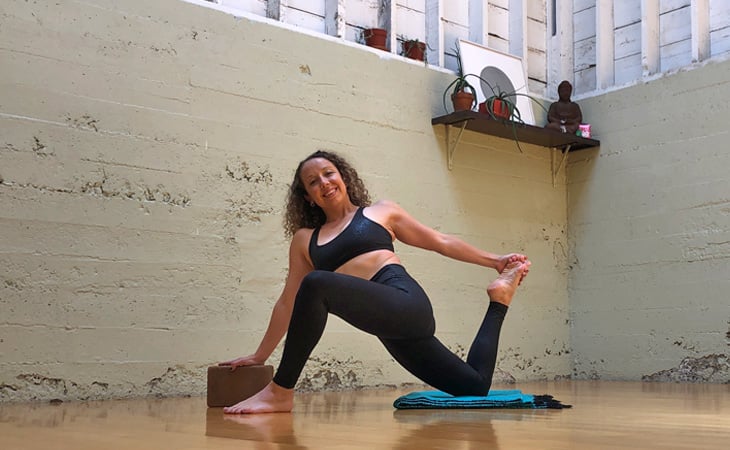
Modification: Use a block beneath your bottom hand to assist in the quad stretch
How to practice:
- From your front planted palm, lower onto your forearm
- Bend your back knee and reach back with the opposite hand to grasp the foot
- Gently rotate your heart towards your front planted knee
- Pulse the quad opening with the breath (inhale: kick back, exhale: squeeze in)
- Draw the back heel towards you AND press your hand into your foot to create added resistance
6. Heart-Melting Pose
Sanskrit: Anahatasana
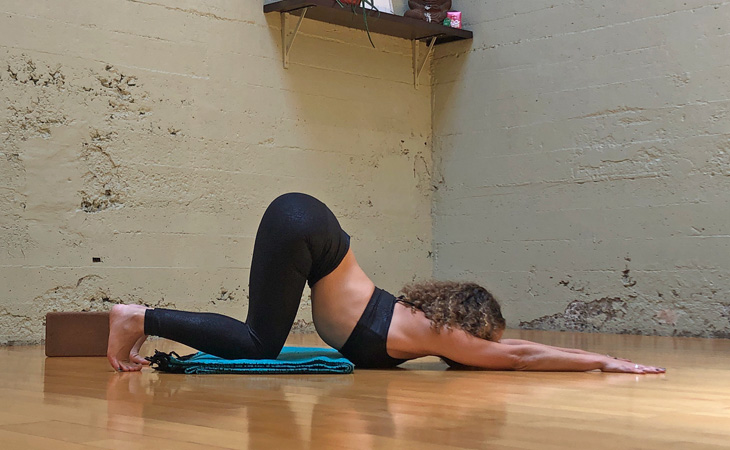
Enhancement: Bend elbows for increased tricep extension
Optional add-on: Place hands on blocks in extension
How to practice:
- From Table Top position, keep the hips above your knees and extend your arms forward
- As you inhale, extend your spine. As you exhale, melt your heart towards the earth
- Externally rotate your shoulders, allowing for more space in the front of your body
7. Wheel Pose: You Made It!
Sanskrit: Urdhva Dhanurasana
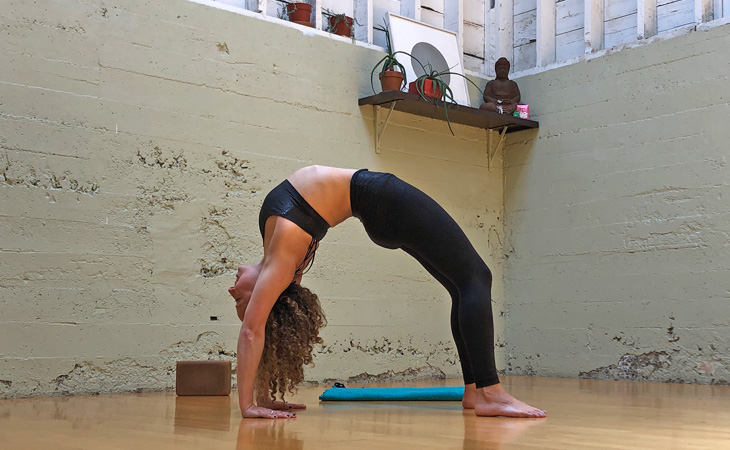
Modification: Bridge Pose, or Setu Bandha Sarvangasana
Enhancement: Inverted Staff Pose, or Viparita Dandasana
How to practice:
- Begin on your back with your feet planted hip-distance apart and your palms planted by your ears
- Engage the back side of your body to support the opening in the front side
- Use your exhale breath to press into your palms and feet as you lift your hips and heart skyward
- Externally rotate your shoulders towards your face to create more length
- Press equally through your hands and feet but also use your legs for more leverage
After Wheel Pose, Take a Quick Cool Down:
To end your practice, enjoy a few neutral spine postures like Staff Pose (Dandasana) in order to relieve any residual tension in the spinal column.
Finally, hug your knees into your chest for Apanasana, then end with a Happy Baby (Ananda Balasana). Stay here for a few breaths and allow your body and breath to settle before you enjoy your final Savasana.
Practice Makes Progress! Follow These Steps to Access Urdhva Dhanurasana Safely
Remember that Wheel Pose is a highly demanding and challenging peak pose, so if you aren’t able to access it immediately, don’t fret! Practice this sequence as many times as you’d like and be sure to stay consistent with your practice.
Regardless of whether you achieve Wheel Pose or not, twists are a great way to offload stress on the spine and increase circulation in the body.
If and when you do achieve Wheel Pose, enjoy the new found freedom and liberation you’ve discovered in your body!
And like a good yogi, always be kind and compassionate with yourself. Namaste!
Want More Heart Openers and Wheel Pose Flows? Check Out These Backbend Classes
Explore these popular heart openers and backbends classes on YA Classes. Not yet a member? Try it out for free for 14 days.


This Month's Letter
From the Editor
Monthly motivation and food for
thought from our founder.



